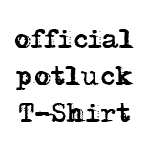Movie Trailer Spoof (ca. 1987)
The quality of this vid is not the greatest, but excellent considering it came off a nearly 20 year old VHS dub. We're just calling it Movie Trailer Spoof because the real title is also the punchline.
Comedy. Pixelvision Black & White Video. 1 min. (approx)
Cast: John Mercado, Scott Duprey
Written & Directed by Carlos Sanchez Lopez
The only change made to this movie was the removal of a black frame that the Pixelvision format placed around the image. We removed it to save bandwidth.
This movie is notable in that it was the first use we made of an insert edit, namely the exterior stunt footage. Prior to this, all of our movies were shot totally in sequence, because the quality of analog video degrades slightly every time it is copied, and back then you couldn't edit analog video without copying it.
All of the narration and music was shot live with the accompanying picture because we had no way of laying in multiple audio tracks. We could have replaced the audio entirely, but had no way of doing it without copying the video as well. As such, we chose not to dub in any audio or sound effects in order to maintain the quality of the image.
We held a prism in front of the lens when we recorded the opening narration. When light passes through a prism, it splits up into the different colors of the visual spectrum. Even though the Pixelvision format is black and white, we experimented with the prism anyway, thinking that perhaps the light passing through it would still look interesting and hopefully, futuristic.
The interior footage was recorded directly to VHS tape by hooking up the RF output of the PXL-2000 to the coaxial input on a standard home NTSC VHS deck while shooting. This resulted in a picture that was recorded at 29.97 frames per second (fps) and also has cleaner sound in that the camera's motor cannot be heard -- because it isn't running. The exterior footage was recorded onto Chrome audio tape at 15 fps, which is what the PXL-2000 recorded to natively. You'll notice that you can hear the noise of the camera motor in the sound track during that part of the movie. Also, the slower frame speed gives the stunt fall a silent movie slapstick feel, due to it's speedy jerkiness when viewed at 29.97 fps. For example, Charlie Chaplin
That's a boom box being held up to represent "The Miracle of Modern Science."
The last shot of Robocock facing the camera and then turning profile to reveal the size of his endowment was stolen from the movie Roxanne, directed by Fred Schepisi
. Early in that film, Steve Martin
faces the camera and then turns profile to reveal the size of his endowment.
If we were pretentious, we could point out that this movie should also get certification number double negative zero from the Dogme 95 committee. . .ah, what the fuck?! We'll point it out anyway (for the sake of education, of course):
- it was shot on location,
- all sound was produced live with the image,
- the camera was handheld,
- there were no opticals or filters used,
- there's no superficial action (the stunt fall actually happened in the moment and wasn't contrived, the guy was supposed to make it over the bench [how's that for 'the reality of doing'?]; also, the action is paramount to the resolution of the story being told, in fact, the story was built around that moment),
- it takes place in the here and now,
- it isn't a genre movie and
- the director is not credited in the movie.
Related Potluck
Episodes:
Some
Stuff We Had Lying Around : State
Penn in Black & White
Some
Stuff We Had Lying Around : Chicago
Jones 4

 del.icio.ous
del.icio.ous



